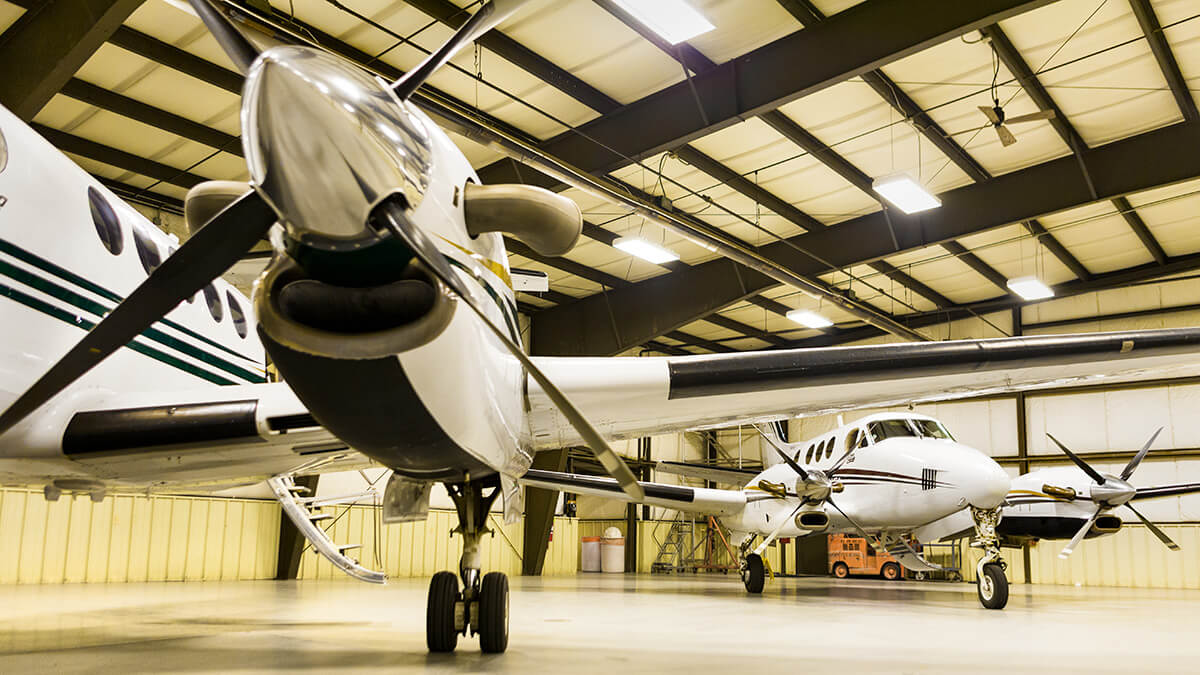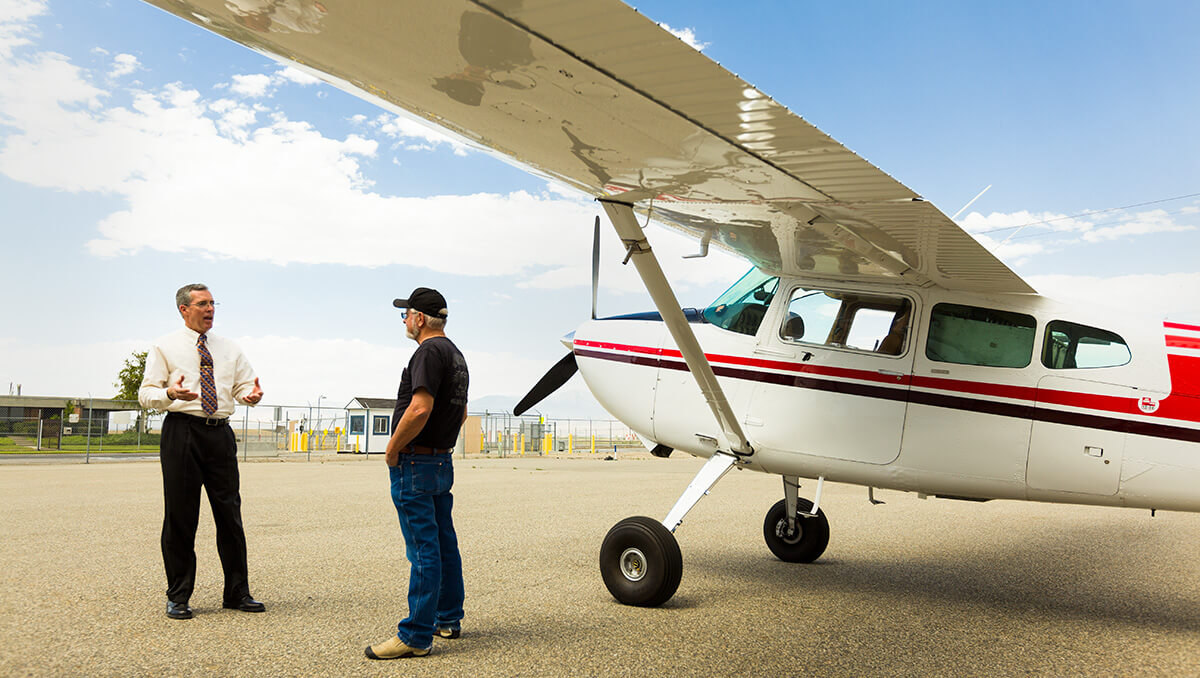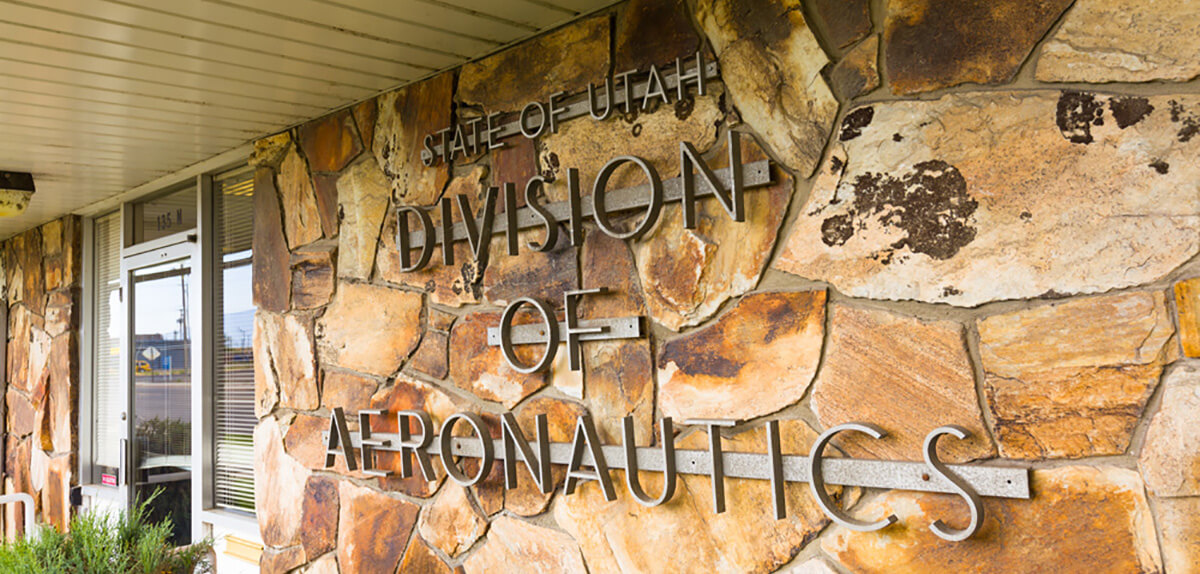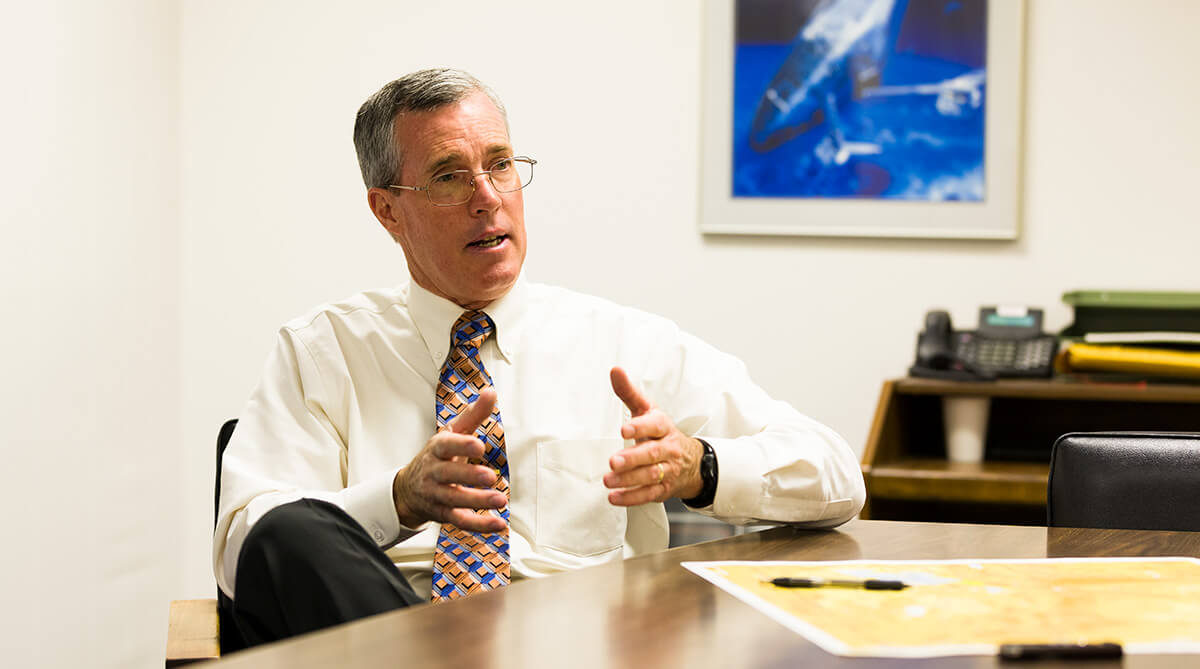
Unlike some officials who believe that selling aircraft should be one of the first steps taken to balance state government budgets in lean times, Utah’s leaders recognize how indispensable general aviation airplanes are in providing essential government services.
Sept. 17, 2012

St. George is the only city in Utah with commercial airline service from Salt Lake City, the capital. “Any other location in the state has to be driven to, and they are not short drives,” explained Pat Morley, director of aeronautics for Utah’s Department of Transportation. “This state prides itself on being fiscally conservative. Part of the successful formula for running the state efficiently has included the use of business aircraft. That’s why the state aircraft are such valuable tools.”
The Aeronautics Division has been operating King Airs for more than 30 years and currently flies a 1998 model C90B and a 2000 model B200, both of which can access virtually all of the state’s 46 public-use airports. With typical trips being 300 miles long, Morley said, “The King Air is perfect. We could fly a single-engine turboprop, but when flying over mountainous terrain in instrument flight conditions, that second engine gives us peace of mind.”
JUSTIFYING A STATE AVIATION OPERATION
Continuing to fly state-owned aircraft in the current budget environment may be a hard sell in some parts of the country, but Morley has already answered one of the toughest questions.

“State legislators have asked, ‘Should the state or private sector be providing these services?’” said Morley. “We have demonstrated that it is much more cost-effective for the state to own the aircraft than farming these functions out. The state legislature has asked that the rate we charge state agencies for providing air transportation cover at least the direct operating cost.
“There is a lot of concern from elected officials that aircraft might be perceived as a perk or luxury versus a business tool,” continued Morley. “I make sure that if anybody has questions about the airplanes, I invite them to come take a look at our operation and see how the aircraft are utilized. That way, they won’t have misconceptions about the way the airplanes are used.”
For instance, the governor accounts for only 10 percent of the annual flight time on the state’s King Airs. Usually, it’s not the heads of state agencies that fly, but instead it is mid-level managers. “In the 12 years I have been here, I have never once seen a frivolous flight,” Morley said. “The agencies are very cost-conscious and image-conscious.”
PROVIDING ESSENTIAL SERVICES STATEWIDE
One of the state agencies that utilize the King Airs is the Department of Health, which conducts full-day medical clinics for Utah children in rural areas that do not have access to the full range of health care available in Salt Lake City. The airplanes transport doctors and other medical staff anywhere in the state in about an hour, rather than having them drive 6.5 hours each way to such distant locales as Blanding, a town of 3,000 people in the southeast corner of Utah. If the medical people had to drive to such destinations, it would be a three-day trip.
“The accountants can look at this and tell exactly what it costs,” said Morley, but what’s not included in their calculation is the toll that lengthy drives would take on the medical staff. “If they only did one clinic a year, that might be fine. But they don’t; they do 20 to 25 clinics a year. So it wouldn’t take long for these highly skilled personnel to say, ‘It really doesn’t make any difference how much you are paying me; I just don’t want to make that drive anymore.’ In that regard the airplane plays a vital role that you can’t quantify.”
In fact, “time is the issue for every agency that uses the airplanes,” declared Morley. For example, the Department of Facilities and Construction Maintenance (DFCM), often uses contract engineers and architects, consultants who are paid by the hour. “DFCM finds it much more cost-effective to fly them down and back than put them on the road.”

STILL A WINNING FORMULA
Before the recession, the Aeronautics Division had four pilots and each King Air flew 375 to 400 hours annually. In recent years, two of the aviators have retired and because of budget cuts, Morley was only allowed to hire one permanent replacement pilot. So, Morley relies instead on one of several contract pilots to fill in when a fourth flight crewmember is needed and sometimes even flies himself. The remainder of the Aeronautics Division’s lean staff includes two aircraft mechanics, one pavement engineer and one aeronautical planner and support services coordinator.
When aviation fuel prices began to rise several years ago, the Aeronautics Division had to increase its aircraft rental rate for the first time in seven years. At the same time the rates were going up, the agencies that utilize the airplanes suffered budget cuts. Consequently, the two turboprops are only flying approximately 225 hours each per year now.
While some consideration was given to operating only one King Air, Morley says flying just a single airplane would not allow him to meet all the agencies’ travel needs. “In the current fiscal environment, we are underutilizing the planes, but not enough to justify just one plane. And the fact that they are paid for helps [justify keeping both].”
Nevertheless, Morley’s challenge has been to find a way to enable the state agencies that depend on air transportation to get the most for their travel dollar in a tight budget environment. He decided to encourage different agencies to jointly use aircraft in a practice he calls “piggybacking,” or sharing a ride. By publishing the aircraft schedules online – with the date, time, origin and destination of upcoming trips listed – agencies with business in the same town have been able to share the cost of a flight. As a result, Utah’s King Airs typically fly full.

– Pat Morley, Director of Aeronautics, Utah’s Department of Transportation.
In 2008, an outside firm audited the Aeronautics Division and issued a formal report to the legislature that is online for all interested parties to see. “We try to be as transparent as possible,” said Morley.
Although Utah’s King Airs are more than a decade old, Morley acknowledged that acquiring a new airplane would be difficult in the current budget climate. However, he is planning for that eventuality by performing a cost/benefit analysis that includes monitoring trade-in value and gauging how many more years the current airplanes can fly efficiently. In time, Morley will send his recommendations to the state legislature, which would need to approve acquisition of any new aircraft.
Meanwhile, Morley enjoys playing a part in helping promote the future of aviation. “I really get a lot of satisfaction from the tours we provide for Boy Scouts and elementary school children. They are here for only an hour, but that hour is important because a busload of kids have been introduced to aviation. They are so excited, and [by giving them a tour] we’ve made them aware of the significant impact that aviation plays in their lives.”
SHOULD OUR STATE HAVE A FLIGHT DEPARTMENT?
States considering establishing their own flight departments need to ask several questions to determine the viability of such an operation:
- How many state officials need on-demand air transportation?
- Where and how often do passengers need to travel?
- What airline service is available?
- What is the runway length at the most frequently used destination airports?
- Are there any special operational considerations (such as flying into hot and high airports) that dictate use of certain types of equipment?

STUDY HIGHLIGHTS BUSINESS AVIATION VALUE TO LOCAL, STATE, FEDERAL GOVERNMENTS
A new study shows that local, state and federal government use of business aircraft increases agency or departmental efficiency and provides significant taxpayer value. The study, titled Government Use of Aircraft: A Taxpayer Value Perspective, is the third in the Business Aviation Users study series completed by NEXA Advisors, LLC for the No Plane No Gain advocacy campaign. The study concludes that business aircraft provide strong returns on an organization’s investment in the asset.
The two previous studies, which analyzed Standard & Poor’s (S&P) 500 companies and S&P 600 small-cap companies, conclude that business aviation contributes to companies’ ability to deliver greater shareholder and enterprise value. All three studies make clear that the use of a business airplane is the sign of a well-managed enterprise.
“These complementary studies highlight the importance of business aviation and demonstrate that the value of business aircraft in boosting efficiency, productivity and flexibility is realized by businesses and government organizations alike,” said NBAA President and CEO Ed Bolen.
The latest NEXA study finds that “government use of aircraft provides taxpayer value by providing public safety and security, supporting more efficient, effective government, protecting public health and welfare, facilitating economic growth, improving tax dollar efficiency, promoting good government relations, and improving compliance.”
The study provides evidence that use of aircraft in the conduct of government business has grown in recent years, and that the more than 2,000 aircraft in public use contribute to the ability of civil servants to deliver many critical public services, including:
- Providing state and federal government officials with secure and efficient transportation
- Supporting constituent services in communities with limited or no airline service
- Supporting emergency preparedness and disaster response
- Supporting law enforcement and highway patrol
- Transporting cargo, parts and mail
- Fighting forest fires
- Supporting border patrol
- Supporting counterterrorism and other security initiatives
The study includes excerpts from numerous government officials who utilize general aviation in the execution of their mission. Read more and download a full copy of Government Use of Aircraft: A Taxpayer Value Perspective.


 International Business Aviation Council Ltd.
International Business Aviation Council Ltd.